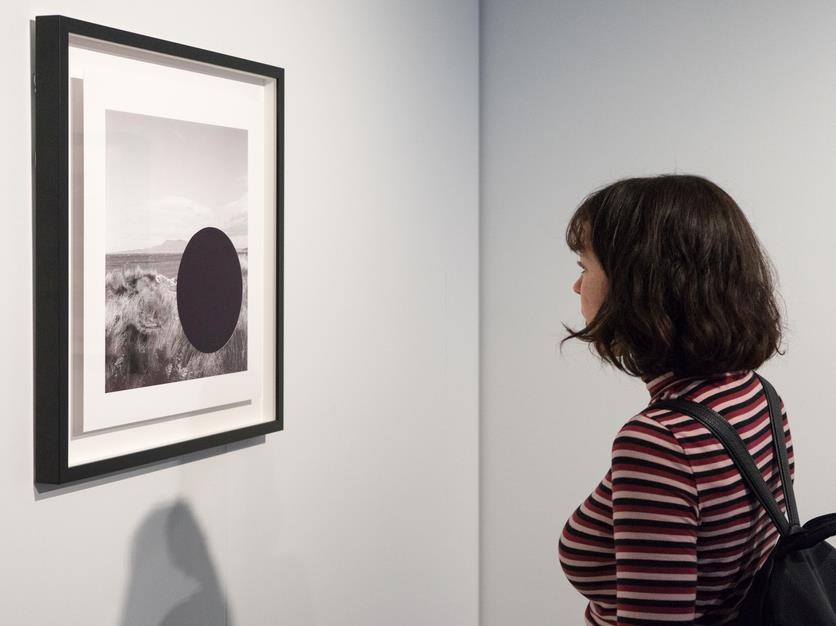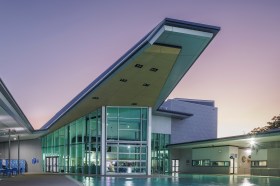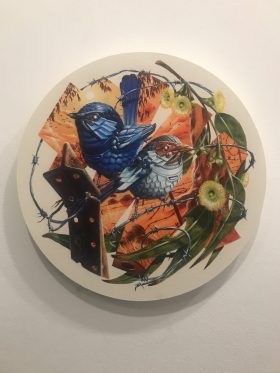Visitor and installation view of James Tylor, (Deleted scenes) From an untouched landscape #7 2013. East Coast of Tasmania, Palawa land. Inkjet print on hahnemuhle paper with hole removed to a black velvet void, 60 x 60cm (framed). Courtesy the artist and UTS Art Collection
The exhibition Void, curated by Emily McDaniel, a Kalari woman from the Wiradjuri Nation, invites us to reconsider the notion of the void beyond a spatial experience of absence and presence.
McDaniel’s curation focuses on the context of Indigenous art, reclaiming and framing landscape through Indigenous knowledge and experience. The exhibition as a whole engages with Indigenous art as science, as history, and as a comprehensive storyline that employs multiple and varying truths.
Two artists in the exhibition use subtraction and removal as devices to describe relationship to Country. Hayley Millar-Baker’s Meeyn Meerreeng, (2017) is an installation in which the artist has collected volcanic stones collected on her land on Gunditjmara country. On first appearance the work appears like a protest – the stones have been taken from Country and painted black – removed from time, land and context. But in the greater context of the exhibition the rocks also indicate the artists personal connection to the land they come from.
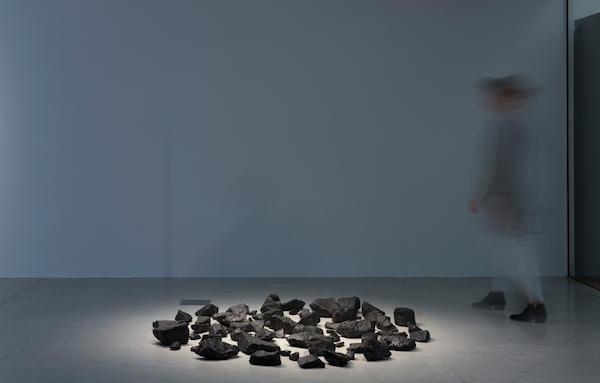
Hayley Millar-Baker, Meeyn Meerreeng (Country at Night), 2017. 71 volcanic and granitic rocks, acrylic, varnish, dimensions variable. Courtesy the artist and Vivien Anderson Gallery.
James Tylor’s black and white photo series Deleted Scenes From an Untouched Landscape (2014/2015) captures landscapes across Australia. Tylor has cut into each image and backed the void with black velvet. Each deep cut seems arbitrary and speaks to the indiscriminate erasure of Indigenous histories, people and knowledge. In Tylor’s work something is forever missing, in Millar-Baker’s it’s there.
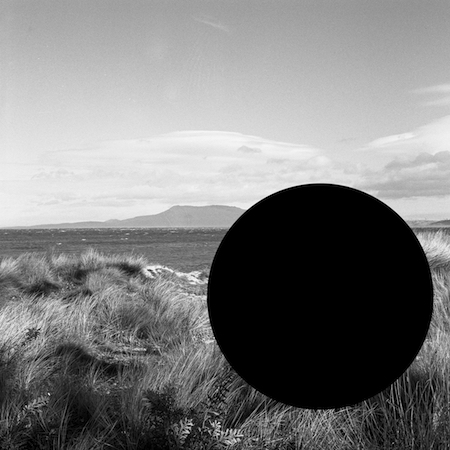
James Tylor, (Deleted scenes) From an untouched landscape #7, 2013. East Coast of Tasmania, Palawa land. Inkjet print on hahnemuhle paper with hole removed to a black velvet void, 60 x 60cm (framed). Courtesy the artist and UTS Art Collection.
The void is a disputable space that cannot be proven through scientific method or empirical measurement. Mabel Juli’s work Garnkiny Ngarrangkarni (2006) is an interpretation of the moon dreaming belonging to her Ngarranggarni & Gitja country and is a window into the flowing histories of her people.
Captured with natural ochres and pigment, the black and white painting tells of forbidden love, kinship systems and the creation of the moon. While Western science uses empirical data to prove and navigate celestial systems, Juli uses dreaming and her paintings are irrefutable maps to the stars.
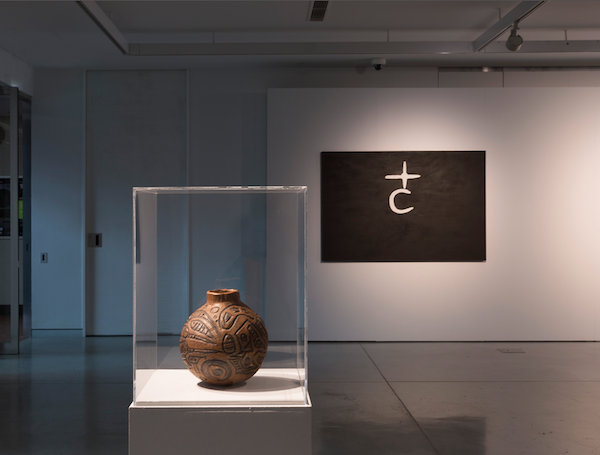
(Front) Thancoupie, Peetharee story – Dugong & Emu, 1980, hand built earthenware, slip and oxide decoration on incised designs, 30 x 30 x 30 cm. Collection of Bathurst Regional Art Gallery, purchase. Photograph: David Roma; and (Rear) Mabel Juli, Garnkiny Ngaranggarrni, 2006. Natural ochre and pigment on canvas, 180 x 120 cm. Courtesy the artist and Warmun Art Centre.
Participating in one of the exhibition’s yarning circles with Daniele Hromek, a Yuin woman whose speculative interior drawings and hand renderings of architect Peter Eisenman’s House Number 2 (2013) features in the exhibition, reaffirmed for me the exhibition’s nature of openness.
The space created by the yarning circle emphasised a practice Hromek described as didiri, a Yuin word from the south-coast of NSW that embodies deep listening, responsiveness and responsibility to Country. In this spirit of deep listening, Void invites us to engage with Indigenous ways of learning, and to hear a multiplicity of knowledges, truths, and histories.
Rating: 4.5 stars ★★★★☆
Void
UTS Gallery, University of Technology Sydney
25 September – 16 November
Curated by Emily McDaniel
Artists: Dr Thancoupie Gloria Fletcher AO, Danièle Hromek, Jonathan Jones, Mabel Juli, John Mawurndjul AM, Hayley Millar–Baker, Andy Snelgar, James Tylor, Jennifer Wurrkidj and Josephine Wurrkidj
